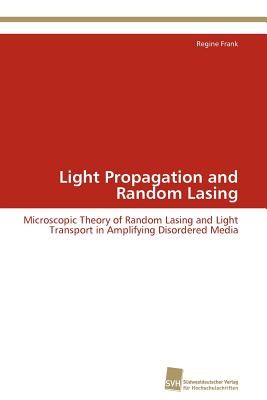
- We will send in 10–14 business days.
- Author: Frank Regine
- Publisher: Sudwestdeutscher Verlag Fur Hochschulschriften AG
- Year: 2012
- Pages: 120
- ISBN-10: 383813009X
- ISBN-13: 9783838130095
- Format: 15.2 x 22.9 x 0.7 cm, softcover
- Language: English
- SAVE -10% with code: EXTRA
Reviews
Description
In the last decade Anderson Localization of Light and Random Lasing has attracted a variety of interest in the community of condensed matter theory. The fact that a system so inartificial as a thin layer consisting of dust particles, which have amplifying properties, can produce coherent laser emission, is of a simple elegance, which promises new insights in fundamental physics. There is no need of an external feedback mechanism, like in the system of a conventional laser. Whereas several attempts try to enter the subject numerically by considering cavity approximations, this thesis is concerned with building a microscopically self-consistent theory of random lasing. Designing this method, we had to study light localization effects in random media including absorption and gain. Incorporating interference effects by means of Cooperon contributions we derived Anderson localized states for passive media. Mapping this on a system which consists of laser active Mie-scatterers in a passive medium, we found that by incorporation of the Cooperon, we loose the Anderson localization, but the system is weakly localized, which is sufficient for population inversion and stimulated emission.
EXTRA 10 % discount with code: EXTRA
The promotion ends in 20d.15:32:49
The discount code is valid when purchasing from 10 €. Discounts do not stack.
- Author: Frank Regine
- Publisher: Sudwestdeutscher Verlag Fur Hochschulschriften AG
- Year: 2012
- Pages: 120
- ISBN-10: 383813009X
- ISBN-13: 9783838130095
- Format: 15.2 x 22.9 x 0.7 cm, softcover
- Language: English English
In the last decade Anderson Localization of Light and Random Lasing has attracted a variety of interest in the community of condensed matter theory. The fact that a system so inartificial as a thin layer consisting of dust particles, which have amplifying properties, can produce coherent laser emission, is of a simple elegance, which promises new insights in fundamental physics. There is no need of an external feedback mechanism, like in the system of a conventional laser. Whereas several attempts try to enter the subject numerically by considering cavity approximations, this thesis is concerned with building a microscopically self-consistent theory of random lasing. Designing this method, we had to study light localization effects in random media including absorption and gain. Incorporating interference effects by means of Cooperon contributions we derived Anderson localized states for passive media. Mapping this on a system which consists of laser active Mie-scatterers in a passive medium, we found that by incorporation of the Cooperon, we loose the Anderson localization, but the system is weakly localized, which is sufficient for population inversion and stimulated emission.


Reviews